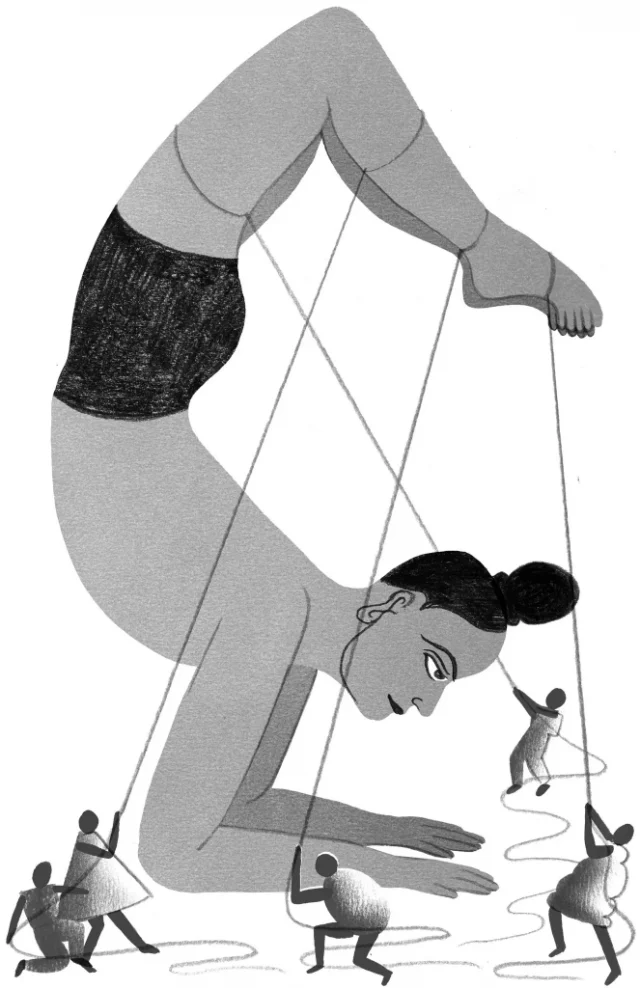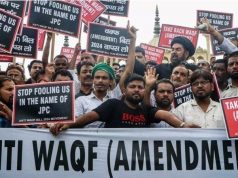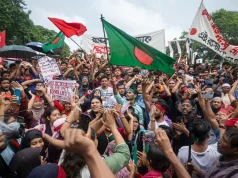Yoga is mostly perceived as a cultural practice solution for mental tensions and physical issues. Though it is normalized in the social psyche through films and advertisements there is an ecosystem that is created by the dominant discourse to romanticize yoga as an uncriticized one, this article attempts to critically evaluate yoga in this context.
Arguments for ratifying International Yoga Day in U.N. got momentum after 2014 as part of efforts to Indianisation, through the Brahmanisation of yoga. Due to the wider practice of yoga throughout the world, even in America, the pro-Hindutva groups made a ruckus arguing to remove white men as yoga instructors. The Hindutva argument that yoga is an Indian cultural capital or hallmark of Hinduism reproduce authority form of Brahmanical culture as possible through.
At the same time, Meera Nanda and Andrei Jayein in their studies talk about the contribution of England, the U.S., and Sweden to the cultural form of yoga and its form of practice. At the same time, relegating yoga’s heterogenous history to Hindu Brahmanism, which originated in the diverse cultural ties of South Asia beyond the Hindu traditions, is an apparent intrusion of cultural invasion.
The Brahminical system of yoga, which enabled the homogenous historical construction of yoga, reproduces the hierarchy of casteism. In pre-independent colonial India or earlier in its history, yoga was something accessible only to the upper classes. Anjali Rao says that since all the major texts of yoga were in Sanskrit, the Dalits who were not allowed to study Sanskrit had no access to them. In Hindu Puranas including Ramayana, how the Dalit yoga efforts were eliminated is clearly discussed.
Many yoga traditions try to control the body sexually within this concept of purity and pollution. In the epic Ramayana, it is said that a sick child of a priestly family to restore his health killed a Dalit who dared to practice yoga. It restricts aspirations and exercises of the yoga of Dalith existence in its traditions and texts. Also, in Yoga Sutras—which has been correctly described as “the yoga canon for people who have accepted Brahmin theology”. Yoga catalyzes the socio-political climate of caste exclusion throughout India.
The student body directly exposed to such impositions must be willing to engage with elite interests in discourses that have secularized yoga in educational institutions. In this sense, it is necessary to analyze what is the cultural existence that enables Brahmanized yoga to be imposed through secularized state institutions in the name of day observances. It puts forth sheer arrogance that whatever signs we give you, should be accepted in the name of secularism. This situation calls to us the necessity of a new language construction to challenge such Brahminic authorities uncritically accommodated in the secular world consciousness.
The videos of Prime Minister Narendra Modi doing yoga during the time of Covid were discussed throughout the whole country and then it seems that the videos of the Prime Minister saying that he does yoga in his free time and healthily uses the lockdown time should be understood along with this topic. Arundhati Roy and Sheena Sooth’s responses to it help us understand these issues precisely. They say that the Prime Minister’s yoga practice and the videos that followed were soft power gimmicks to hide from the larger political questions based on the refugee narrative and the lives of people during the lockdown and to divert public attention from serious allegations including the Rafale case.
In this wake prime minister Modi’s visit to New York and the leading estimated 2000 people who are U.N diplomats in a session of yoga should be discussed. This is commenced with the most uncommon PR spectacle and asserts the cultural proprietorship of the practice. Also, it projects Modi as a clever elder, rather than a supremacist authoritarian in the eyes of the world. Also, it fuels the embarkment of a new Modi trait. It is fueling the new characterizations of Modi from the realities as a cause of the Gujarat riot, supremacist authoritarian to a peaceful world leader.
It is said that the Islamophobic element in these PR spectacles is evident. The current Hindutva efforts to terrorize the Muslim minority through its machinery create a clear aggressiveness, fanaticism, and rigidity in the Muslim subject’s characterization which is clearly rooted in the orientalist approach. These PR gimmicks mask the Islamophobic traits of the government and state-sponsored violence going against the minorities including Christians and ethnic communities of Manipur.
The late psychotherapist John Welwood first named people’s “tendency to use spiritual ideas and practices to sidestep or avoid facing unresolved emotional issues, psychological wounds, and unfinished developmental tasks” as the notion of spiritual bypass. Globally, mindfulness and yoga have long been used by the most powerful members of society to mask violent narratives, privatize social problems, promote escapism, and generate complacency with the status quo. These words expose the agenda of the Sangh Parivar who have smuggled Yoga for their political interests.
It must also be understood that the discourses of de- Brahmanising yoga and embracing it in its scope are strong, but these soft power gimmicks are played on the Brahminical model of yoga currently being described and imposed. This is reminiscent of what Wa’el Hallaq calls the ‘politicization of culturalism’. It is clear that through these cultural action plans the government is planting a clear political authority over the subjects and the sight of the world about Sangh Parivar and its ideology.
At a time when cultural invasion as Yoga Day, Holi celebrations, and Hindi observances politically weaponize citizens against minorities and marginalize Dalits as ‘secular’. A new sense of existence that is problematizing these needs to be developed. A creative critical approach against these media fabrications of weaponized yoga and Hindutva-isation of cultural fabric should be constructed by the students and the civil society.
Picture Credits: Eleanor Taylor (India and the Politics of Yoga by Manil Suri, The Newyork Times)
References:
1) Towards a critical embodiment of Decolonizing Yoga, Sheena Sood
2) https://sojo.net/articles/how-appropriation-yoga-masks-violence
3) https://escholarship.org/uc/item/8nz498zt
4) Césaire, Aimé. 2001. Discourse on Colonialism. New York: Monthly Review Press. Covai Post Network. 2018.
5) https://www.covaipost.com/coimbatore/isha-holds-yoga-trainingfor-army/
6) https://www.byrdie.com/casteism-in-yoga-5119378
7) https://www.middleeasteye.net/opinion/india-modi-yoga-whitewash-crimes-use-how
8) https://www.jadaliyya.com/Details/30281
9) https://www.jadaliyya.com/Details/41048/Spectacles-of-Compassion-Modi-and-the-Weaponization-of-Yoga






